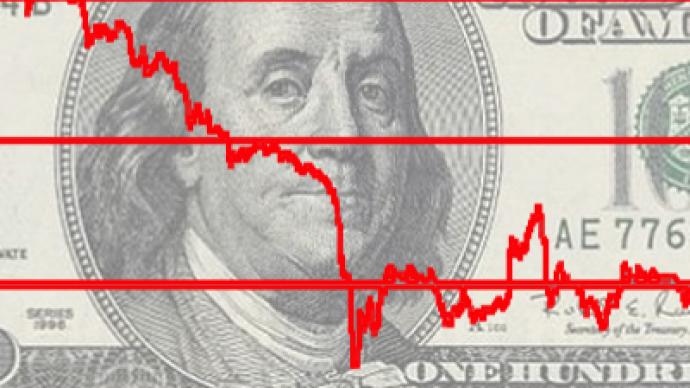The end of True North for the Global Financial System

US debt has been the true north for in the global financial system, offering the certainty of US debt being the safest, most certain investment there is. Markets around the world will open up on Monday morning no longer certain of that.
The move by Standard & Poor’s, following a warning on April 18 this year, end months, if not years, of speculation about how long the worlds largest economy can continue spending beyond its means, with the world’s ratings agencies, in particular the big three – Standard and Poor’s, Fitch Ratings, and Moody’s –considering it’s debt the asset class of ultimate safety. The US retains the highest rating with Fitch Ratings, and Moody’s.In its announcement S&P stated clearly that last weeks political theatrics which resulted in a last minute deal to lift the US debt ceiling, did not inspire confidence in global markets, and was not, of itself, likely to lead to a major address of the debt issues of the worlds largest economy.“We lowered our long-term rating on the US because we believe that theprolonged controversy over raising the statutory debt ceiling and the related fiscal policy debate indicate that further near-term progress containing the growth in public spending, especially on entitlements, or on reaching an agreement on raising revenues is less likely than we previously assumed and will remain a contentious and fitful process. We also believe that the fiscal consolidation plan that Congress and the Administration agreed to this week falls short of the amount that we believe is necessary to stabilize the general government debt burden by the middle of the decade.”S&P added that the sheer size of the US budget deficit meant that even with the passing of the agreement between the Obama administration and the Republican controlled congress, the US would have significant financing issues through the end of this decade, while noting that key issues remained to be addressed.“We view the act's measures as a step toward fiscal consolidation. However, this is within the framework of a legislative mechanism that leaves open the details of what is finally agreed to until the end of 2011, and Congress and the Administration could modify any agreement in the future. Even assuming that at least $2.1 trillion of the spending reductions the act envisages are implemented, we maintain our view that the US net general government debt burden (all levels of government combined, excluding liquid financial assets) will likely continue to grow. Under our revised base case fiscal scenario--which we consider to be consistent with a 'AA+' long-term rating and a negative outlook--we now project that net general government debt would rise from an estimated 74% of GDP by the end of 2011 to 79% in 2015 and 85% by 2021. Even the projected 2015 ratio of sovereign indebtedness is high in relation to those of peer credits and, as noted, would continue to rise under the act's revised policy settings.”This role of US debt in the global financial system has been underlined yet again this week. When volatility arises investors drop riskier assets and head to US treasuries. This week, in the aftermath of a debt ceiling negotiation that can have done nothing to improve confidence in the US, has seen treasuries rise, pushing the two year yield to record lows, as Eurozone sovereign debt woes have firmly caught hold of Spain and Italy, and Chinese inflation figures undermined the prospect of the Middle Kingdom being able to power a rapidly deteriorating global outlook.The size of the US debt market, roughly $9 Trillion, means it simply cannot be immediately replaced as the safe haven for investors, until Friday night representing the lions share of all AAA debt available globally. Currently the three most liquid Sovereign Bond markets are the US Japan and Italy, with Italy under siege over fears about its capacity to manage its finances, and with Japan having a government debt to GDP ratio of 190%. At AA+ in the S&P scale, US debt now ranks below that of 18 nations including Australia, Canada, France, Germany and Hong Kong, none of whom would be capable of, or would need to, issue debt volumes required to keep the AAA market liquid in the way in which US debt does.Because of this the immediate impact is likely to be reasonably limited, although major market volatility of recent weeks makes a major adverse reaction by the global financial system more likely. But the longer effect over time is that medium term borrowing costs could be expected to rise by more than 50 basis points, and possibly as high as 70 basis points over where they are, and this will in the longer term mean higher rates across the board in the US including on mortgages and credit cards. That expectation will now start being factored in to economic outlooks, sales figures and spending patterns, in an economy that is widely seen as having stalled.The international significance of the announcement could be profound.China, the world’s largest holder of US debt, with an estimate $1 trillion worth, is now largely victim to the size of its holdings, often seen as being the key part of keeping the Yuan low against the US dollar and helping China to run massive current account surpluses with the US.The official Xinhua news agency released a statement condemning the US and its inability to retain ultimate market confidence."China, the largest creditor of the world's sole superpower, has every right now to demand the United States address its structural debt problems and ensure the safety of China's dollar assets," and adding "The US government has to come to terms with the painful fact that the good old days when it could just borrow its way out of messes of its own making are finally gone."The Chinese news agency statement reiterated China’s repeated call for a new global reserve currency system, but raised a new call of possible international supervision of US dollar issuance."International supervision over the issue of US dollars should be introduced and a new, stable and secured global reserve currency may also be an option to avert a catastrophe caused by any single country."Governments in Australia, Japan and South Korea, were similarly quick to warn of overreacting to the announcement, with a number of Asian central banking and financial figures indicating that the weekend would be spent developing a considered posture to the news.The immediate reaction by the US Treasury department was to claim a $2 trillion error in Standard & Poor’s calculations. But S&P has not conceded the US Treasury calculations, noting Treasury’s claim "had no impact on the rating decision" and will on Monday announce ratings review results for Agencies linked to the US Treasury including Fannie Mae and Fredie Mac, leading to potentially major knock on effects across the global debt market.When the markets open up on Monday, we are in uncharted waters.
James Blake, RT Business Internet














